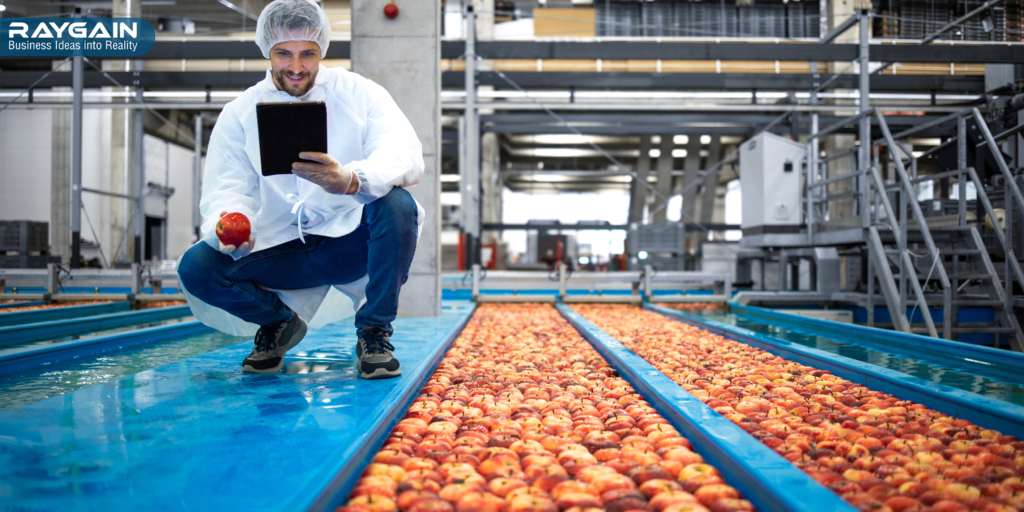In an era where visual data powers everything from AI to automation, image processing has become one of the most critical technologies across industries. Whether it’s healthcare, manufacturing, security, or autonomous systems, the ability to analyze and manipulate images accurately and efficiently is transforming how businesses operate.
As we step into 2025, the demand for intelligent, real-time visual analysis is stronger than ever. In this blog, we’ll explore the top image processing techniques you should know this year—and how companies like Raygain Technologies are leveraging them for next-gen solutions.
📸 What Is Image Processing?
Image processing is a method of performing operations on images to enhance them, extract information, or prepare them for further analysis. It involves converting images into digital format and applying algorithms to perform desired tasks like detection, segmentation, transformation, or enhancement.
At its core, image processing is used for:
- Improving image quality
- Extracting useful features
- Recognizing patterns or objects
- Automating visual inspection tasks
Today’s intelligent systems rely heavily on image processing as a foundation for decision-making and control in critical operations.
🔍 Top Image Processing Techniques in 2025
Here are the must-know image processing techniques every business and developer should be aware of in 2025:
1. Image Segmentation
Segmentation involves dividing an image into meaningful parts or objects. It helps isolate regions of interest like defects in industrial inspection or tumors in medical imaging.
Key Methods:
- Thresholding
- Edge-based segmentation
- Region-based segmentation
- Semantic segmentation using deep learning
Use Case at Raygain: In industrial automation, segmentation helps separate products on a conveyor belt for precise defect detection or quality control.
Advanced segmentation models like U-Net and Mask R-CNN are now standard in high-accuracy tasks, especially in healthcare imaging.
2. Edge Detection
Edge detection finds object boundaries within images, which is critical in computer vision for shape analysis, motion detection, and object tracking.
Popular Algorithms:
- Sobel
- Canny Edge Detector
- Prewitt
- Laplacian of Gaussian (LoG)
Why It Matters: It simplifies image analysis by highlighting important structural features, making downstream tasks like classification more efficient.
Edge detection is often used as a preprocessing step for more complex techniques like feature extraction, segmentation, and facial recognition.
3. Image Enhancement
Image enhancement improves the visual appearance of an image or highlights specific features.
Techniques:
- Contrast adjustment
- Histogram equalization
- Denoising (Gaussian, median filtering)
- Sharpening
Real-World Application: In smart surveillance systems, enhancement ensures better clarity in low-light environments for accurate object recognition.
Medical diagnostics also use enhancement techniques to highlight anomalies in X-rays, MRIs, and CT scans, aiding faster and more accurate decisions.
4. Object Detection and Recognition
This involves identifying and classifying objects in an image using machine learning or deep learning models like YOLO, SSD, or Faster R-CNN.
Key Uses:
- Autonomous vehicles (detecting pedestrians, traffic signs)
- Security systems (facial recognition)
- Manufacturing (defect detection)
Raygain’s Role: We help industries integrate AI-powered object detection models with edge devices for faster and more accurate visual decisions.
In 2025, object detection systems are becoming more accurate and efficient, with lightweight models running in real time on edge hardware.
5. Morphological Operations
These operations are used to process images based on shapes and are particularly useful in binary images for tasks like noise removal and object separation.
Common Operations:
- Erosion
- Dilation
- Opening and Closing
- Hit-or-Miss
Applications: In document processing or printed circuit board inspection, these operations clean up and refine image features.
They also play a significant role in OCR (Optical Character Recognition), where precise shape manipulation improves text extraction accuracy.
6. Color Space Transformation
Different tasks require different color spaces (e.g., RGB, HSV, LAB). Converting images into the appropriate color space can make feature extraction easier and more accurate.
Example: HSV is more suitable for object tracking under variable lighting conditions compared to RGB.
LAB color space, with its separation of luminance and color information, is widely used for tasks involving human perception and color correction.
7. Fourier Transform for Frequency Analysis
Fourier transform is used to analyze the frequency content of an image. It’s especially helpful in filtering and image compression.
Use Case: In medical imaging, Fourier techniques help reconstruct high-quality MRI and CT scan images.
Frequency domain analysis is also crucial in watermarking, texture recognition, and image restoration techniques used in high-security applications.
8. Machine Learning in Image Processing
Modern image processing now heavily integrates machine learning for feature extraction, classification, and pattern recognition.
Techniques include:
- K-means clustering for segmentation
- SVMs for classification
- PCA for dimensionality reduction
These algorithms help improve accuracy and reduce human error in tasks ranging from agriculture drone imaging to smart city surveillance.
9. Deep Learning and CNNs
Convolutional Neural Networks (CNNs) revolutionized image processing with superior performance in tasks like object recognition, scene classification, and image captioning.
Popular Architectures:
- ResNet
- MobileNet
- EfficientNet
Raygain deploys CNN-powered systems for industrial vision solutions that require high precision and scalability in real-time environments.
🌐 Why Image Processing Matters in 2025
With the explosion of visual data and the need for real-time decision-making, image processing is no longer optional—it’s essential. Whether it’s a smart factory monitoring product quality or a hospital analyzing patient scans, image processing enables automation, accuracy, and scalability.
At Raygain Technologies, we specialize in deploying advanced image processing solutions tailored to industrial, security, and healthcare environments. Our systems leverage AI, machine learning, and high-performance computing to deliver real-time visual intelligence that drives smarter operations.
🏢 Industries Benefiting from Image Processing
✔️ Manufacturing
- Defect detection
- Predictive maintenance
- Quality inspection
✔️ Healthcare
- Medical imaging analysis
- Tumor detection
- Surgical guidance
✔️ Security & Defense
- Surveillance analytics
- Object tracking
- Intrusion detection
✔️ Smart Cities & Transport
- Traffic monitoring
- Facial recognition
- Incident detection
🚀 Raygain’s Advantage in Image Processing
As a technology-first company, Raygain Technologies delivers customized image processing systems that integrate with:
- Edge computing devices
- AI and deep learning frameworks
- Secure cloud infrastructure
We help organizations turn raw image data into actionable insights—fast, accurately, and at scale.
Our tailored solutions empower sectors like defense, energy, healthcare, and smart infrastructure to increase efficiency, improve safety, and reduce operational costs.
🧠 Final Thoughts
As we move deeper into 2025, image processing continues to unlock new opportunities for automation, efficiency, and intelligence. From edge detection to object recognition, mastering these techniques will be crucial for businesses looking to stay competitive.
Whether you’re building smart factories, deploying surveillance, or enhancing healthcare diagnostics—image processing is the engine behind intelligent vision systems.
🔗 Related Reads:
Interested in how visual data is driving smarter operations? Explore our blog on Smart Helmet technology to see it in action.










